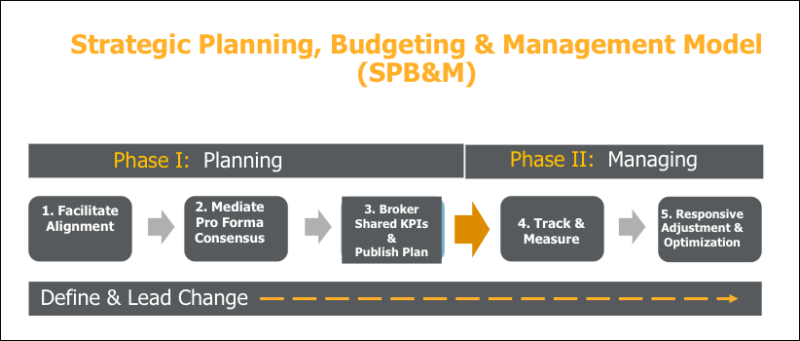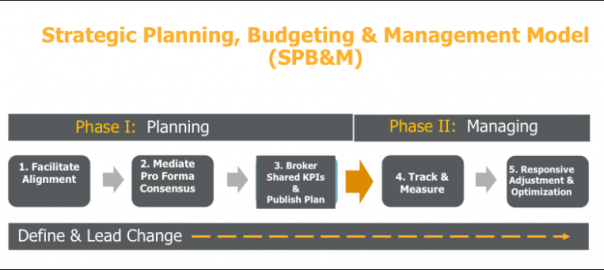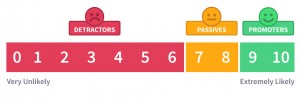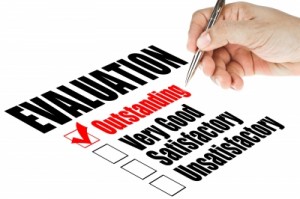Contributor Debbie Qaqish believes marketing operations leaders are becoming the new power players in marketing and gives examples of how they’re driving change in their organizations.

A funny thing is happening to marketing operations leaders. Suddenly, they are showing up in executive meetings, in board rooms and acting as the “two” in the CMO’s “one-two punch” to transform marketing.
Marketing operations (MO) leaders are evolving from “button-pushers” to vision creators and doers of how to operationalize ROI and customer-centric strategies. In Scott Brinker’s “The Grand View of Martech,” he suggests a more strategic view of the role of MO in which “marketing, technology and management are becoming inseparable.”
I agree with Brinker and see this every day. MO leaders are emerging as the new power players in marketing. In this four-part series, I will expand on Brinker’s discussion by moving beyond management to leadership, and provide leadership examples for today’s MO leader.
Difference between management and leadership
Peter Drucker, the father of management theory, defined the difference between management and leadership as: “Management is doing things right; leadership is doing the right things.” This quote succinctly describes the journey of the MO leader from the “fix the technology” manager to the “here is what we need to do differently” leader.
The progression has been quick from manager to leader. For managers, the goal of MO is to build efficiency for marketing by selecting the right systems and optimizing integrations and tactical performance, reporting and adjusting. The strategic MO leaders I see do this — plus more.
They are active change agents in driving how the role of marketing is transforming, how it’s perceived, how it’s operationalized and how it drives revenue and growth through incredible customer experiences. They are mediators and collaborators in working across functions to enable a more holistic marketing role.
They seek to create new alliances around this new role. And they are magicians in the sense that they make true data-driven decisions across functions as they gather and share customer intelligence in almost real time.
An example of MO leadership: Annual planning
The opportunity for the MO leader is to lead marketing to new levels of credibility, accountability, confidence and visibility. One example of MO leadership with huge impact occurs during the annual planning and budgeting process and the management of both throughout the year.
In a recent webinar with Allocadia, I outlined this new role within a five-step framework. Below is the framework illustrating key MO leadership behaviors and benefits to the organization. Behaviors are the actions or reactions of a person in response to external or internal stimuli. In other words, what they do, not what they say.

As you can see across the top of the model, there are two primary phases to the “Strategic Planning, Budgeting & Management” (SPB&M) process: planning and managing.
Under the planning phase, there are three steps the MO leader orchestrates: 1. facilitate alignment; 2. mediate pro forma consensus; and 3. broker shared KPIs & publish plan.
In the second phase, managing, the MO leader executes two steps: 4. track & measure, and 5. responsive adjustment & optimization. Finally, Define & Lead Change is a horizontal bar that extends across the bottom of the model to indicate this set of activities occurs in every stage and step.
Leadership behaviors in Step 1: Facilitate alignment
In this step of the process, the MO leader works within marketing and across other functional groups such as sales and finance to align the planning process and to make marketing an integral part of the entire process from beginning to end. The key leadership behaviors in this step are based on taking a business perspective to marketing.
Key behaviors include proactively reaching out across all marketing and outside groups to establish collaboration and working relationships in planning. This requires a certain level of credibility and accountability. During our webinar, we asked participants to share best practices in an MO-led planning process. Hands down, gaining alignment was the most frequent response.
Leadership behaviors in Step 2: Mediate pro forma consensus
A pro forma is a financial statement of your revenues against expenses and is now a required element to any marketing plan and budget. The leadership behavior in this step is mediating. This includes working across the different groups of marketing to create consensus.
It also includes taking this marketing consensus into negotiations with groups outside of marketing for budget procurement within a limited pool of funds. In this MO-led model, marketing is assuming accountability and being run like a business. The MO leader is the practical purveyor of that vision and how it will be done.
Leadership behaviors in Step 3: Broker shared KPIs & publish plan
From a leadership behavior perspective, this step is not about publishing. Anyone can publish a plan. This step is, first, about getting the company to see that marketing can and should have KPIs that are aligned in terms of revenue and growth. And second, it’s about driving the conversation for complementary KPIs.
In many companies, this represents an enormous change and is key to the organization beginning to see marketing in a new light — one based on revenue, growth and customer engagement. This “brokering” of KPIs is an important activity because once they are established, they become the measure of success.
This is not a set of KPIs that will sit on a shelf and be forgotten. Taking the time to get these KPIs targeted and aligned sets up the managing phase for success and will be where the MO leader really shines.
Leadership behaviors in Step 4: Track & measure
Transitioning from planning to managing requires a new set of leadership behaviors from the MO leader. The key leadership behavior here is holding all groups accountable for the KPIs established in the earlier step. All groups include all of marketing and any group outside of marketing not performing to the required standards or not following the right processes to achieve the KPIs.
Can you imagine your MO leader going to the VP of sales to talk about where sales is falling down? Yep, that’s a leadership behavior. Through reports and dashboards, KPIs are visible across all groups, and consequences for non-performance are known.
MO leadership behaviors in Step 5: Responsive adjustment & optimization
Leadership behavior in the context of Step 5 is not about the act of reporting; it’s about driving for results — a key leadership attribute. Regardless, of the group, the MO leader takes responsibility through collaborating, influencing, cajoling and modeling what it takes for a team win.
The influence of the MO leader in this context extends beyond providing data, advice and insights for marketing to optimize performance in terms of revenue, growth and customer engagement. It extends to finance, sales, IT and any group that affects the complementary basket of KPIs designed in the planning process to achieve company goals.
Define & lead change
The final element of the SPB&M framework is to define and lead change. By now, it’s fully apparent that the MO leader is leading change in terms of the actual role of marketing in revenue, growth and customer engagement. The MO leader is driving change by running marketing like a business and partnering with other groups to achieve company goals.
The MO leader is also driving change in core processes and making marketing accountable for results, not activities. Finally, the MO leader enables these changes through the smart use of technology and data.
In conclusion
The MO leader is emerging as a power player in marketing. The rise of the MO function is finally enabling marketing to step up, run marketing like a business, impact company revenue and growth and help the firm compete based on a customer-centric strategy.
Moving the MO leader from “button-pusher” to “strategy operator” creates a unique and competitive capability for a company. How would you describe your MO leader? Is he or she doing things well versus doing the right things, such as exhibiting concrete leadership behaviors? If so, you are losing a competitive advantage every day.
[Read the full article on MarTech Today.]
Some opinions expressed in this article may be those of a guest author and not necessarily Marketing Land. Staff authors are listed here.
Marketing Land – Internet Marketing News, Strategies & Tips
(102)
Report Post







